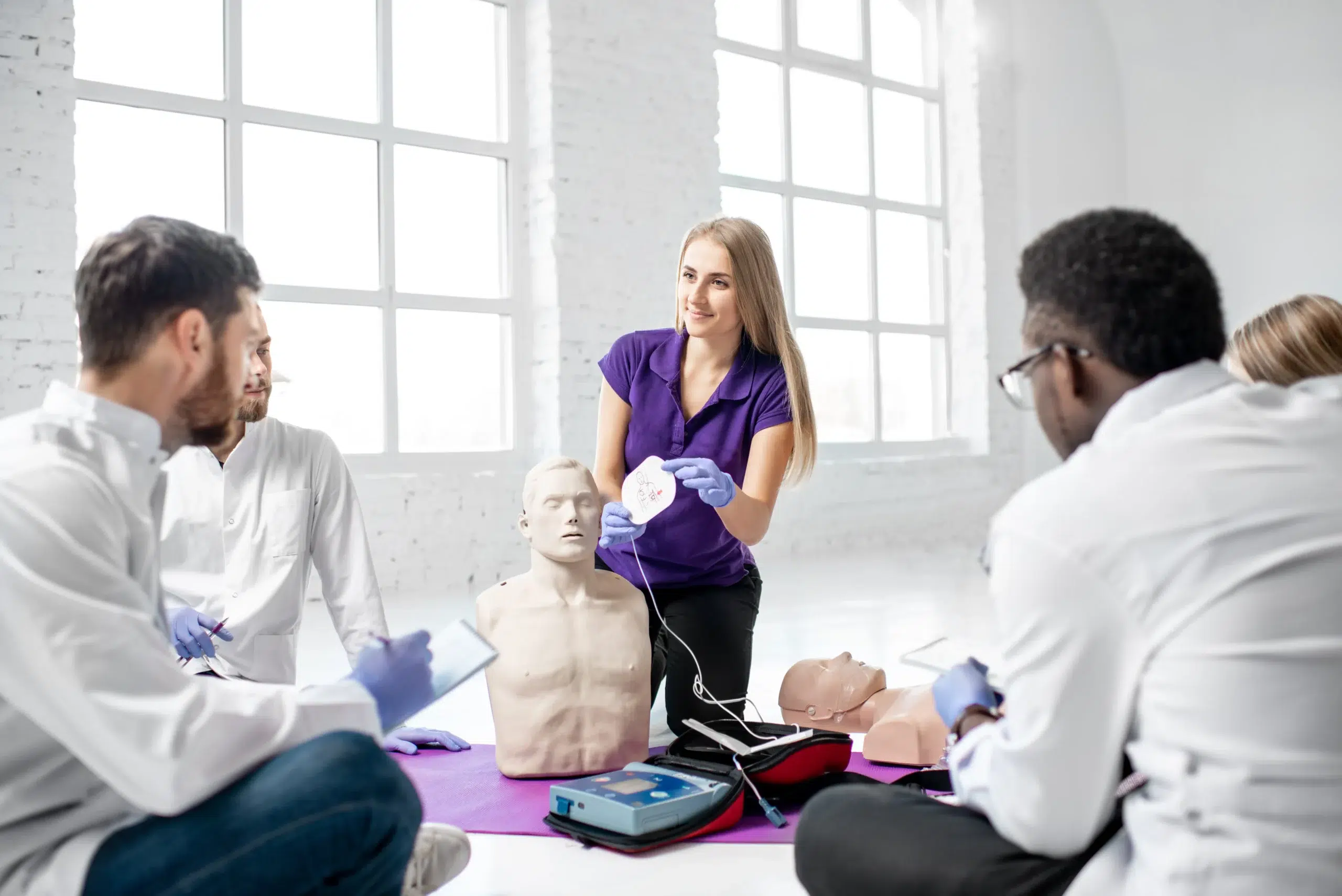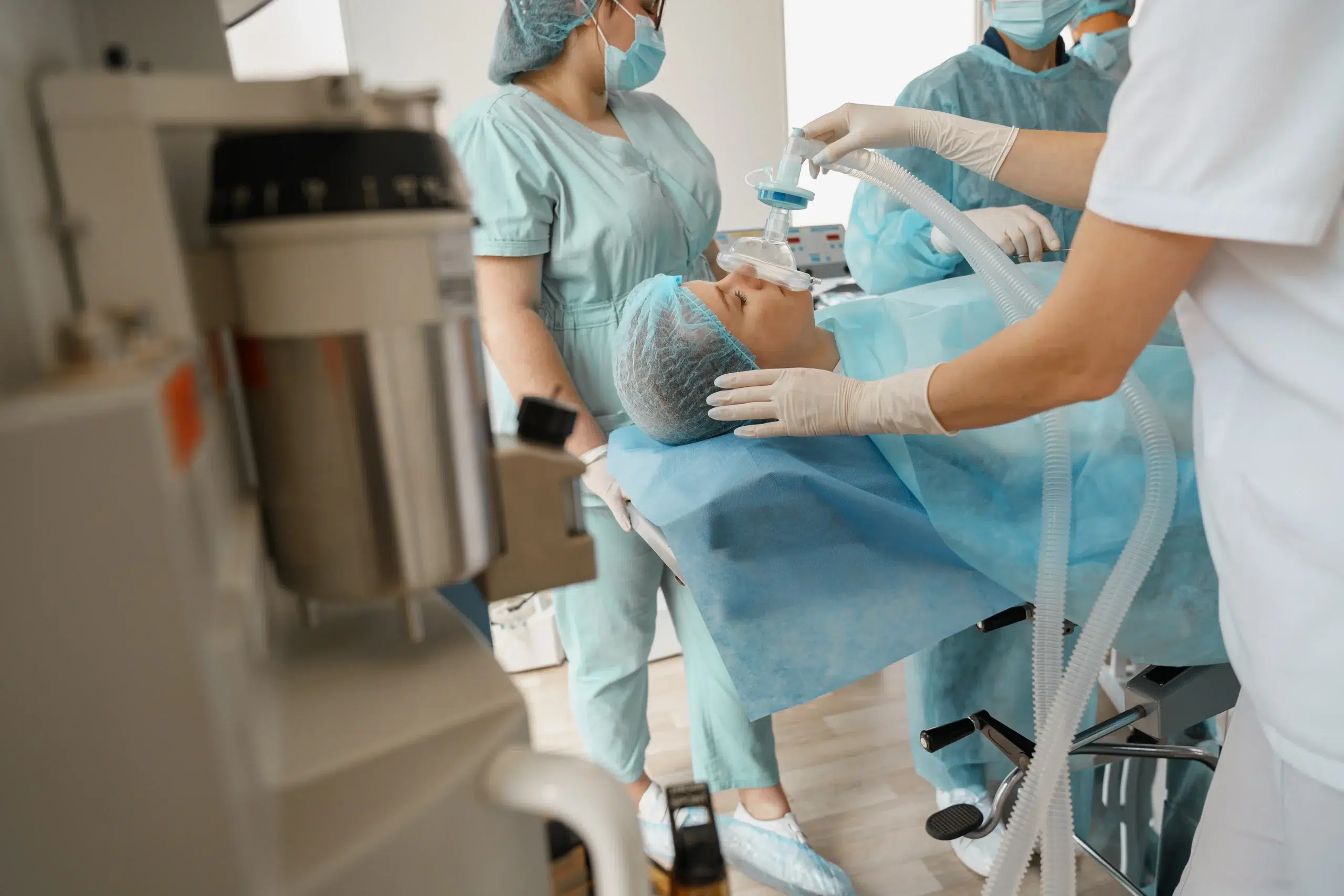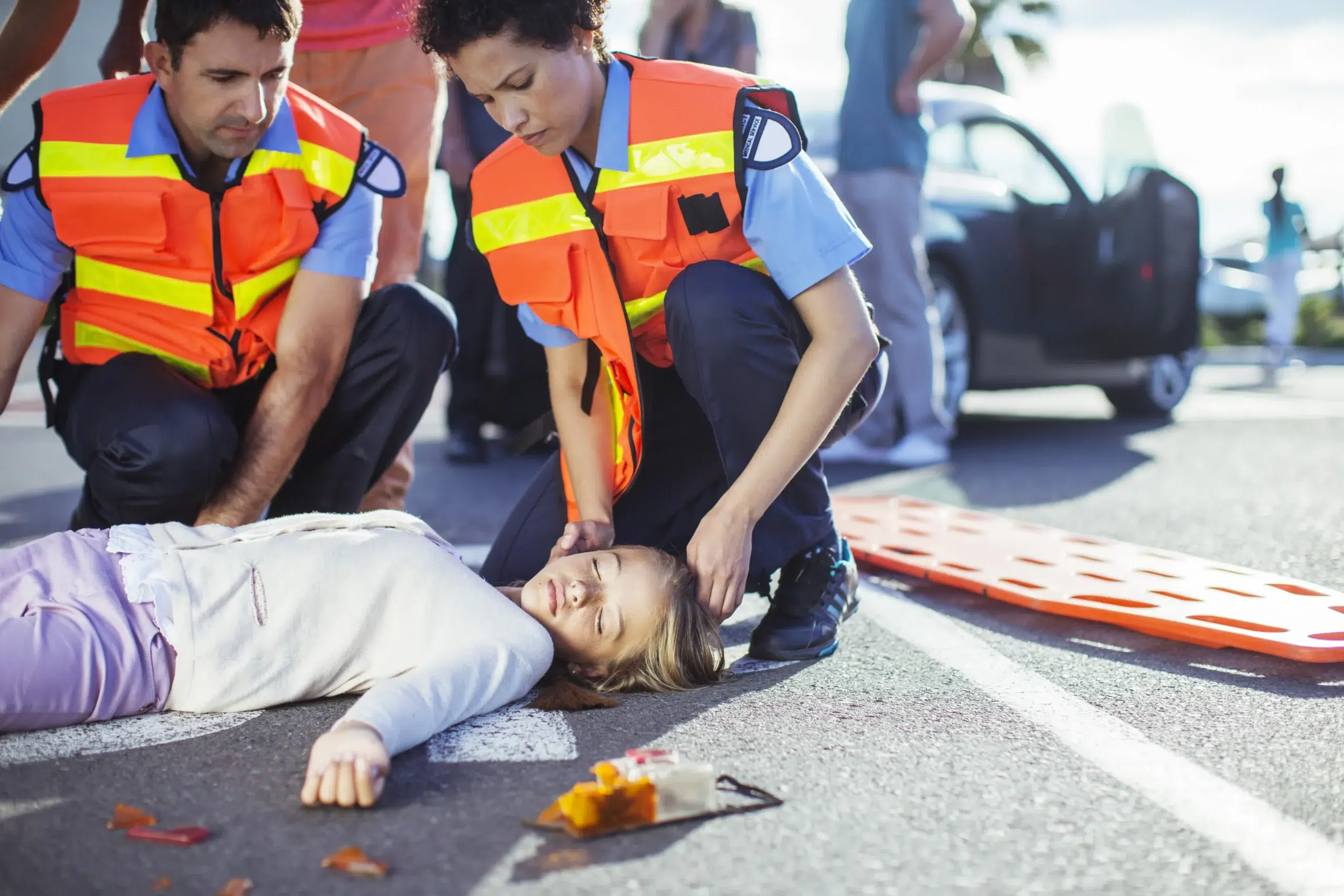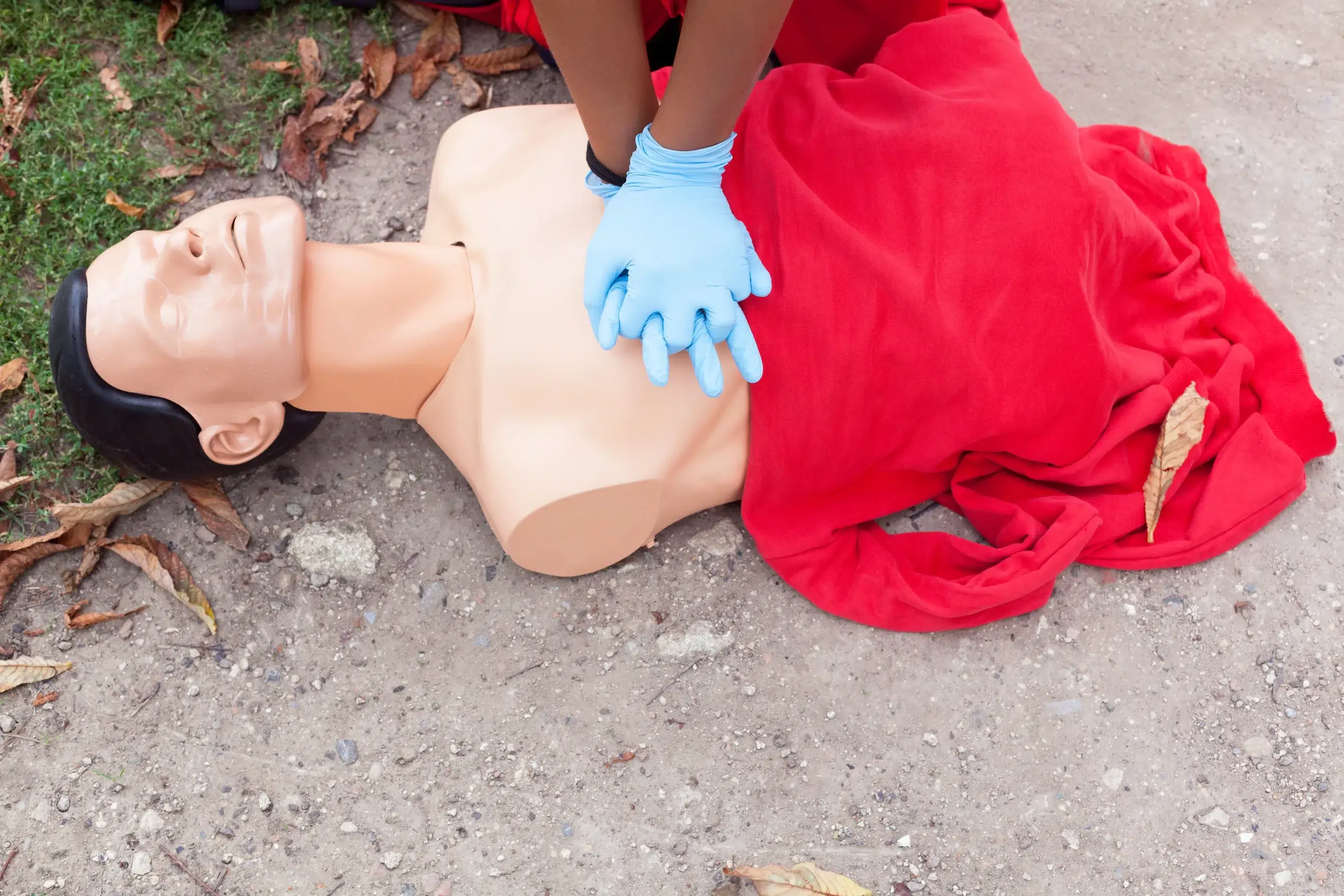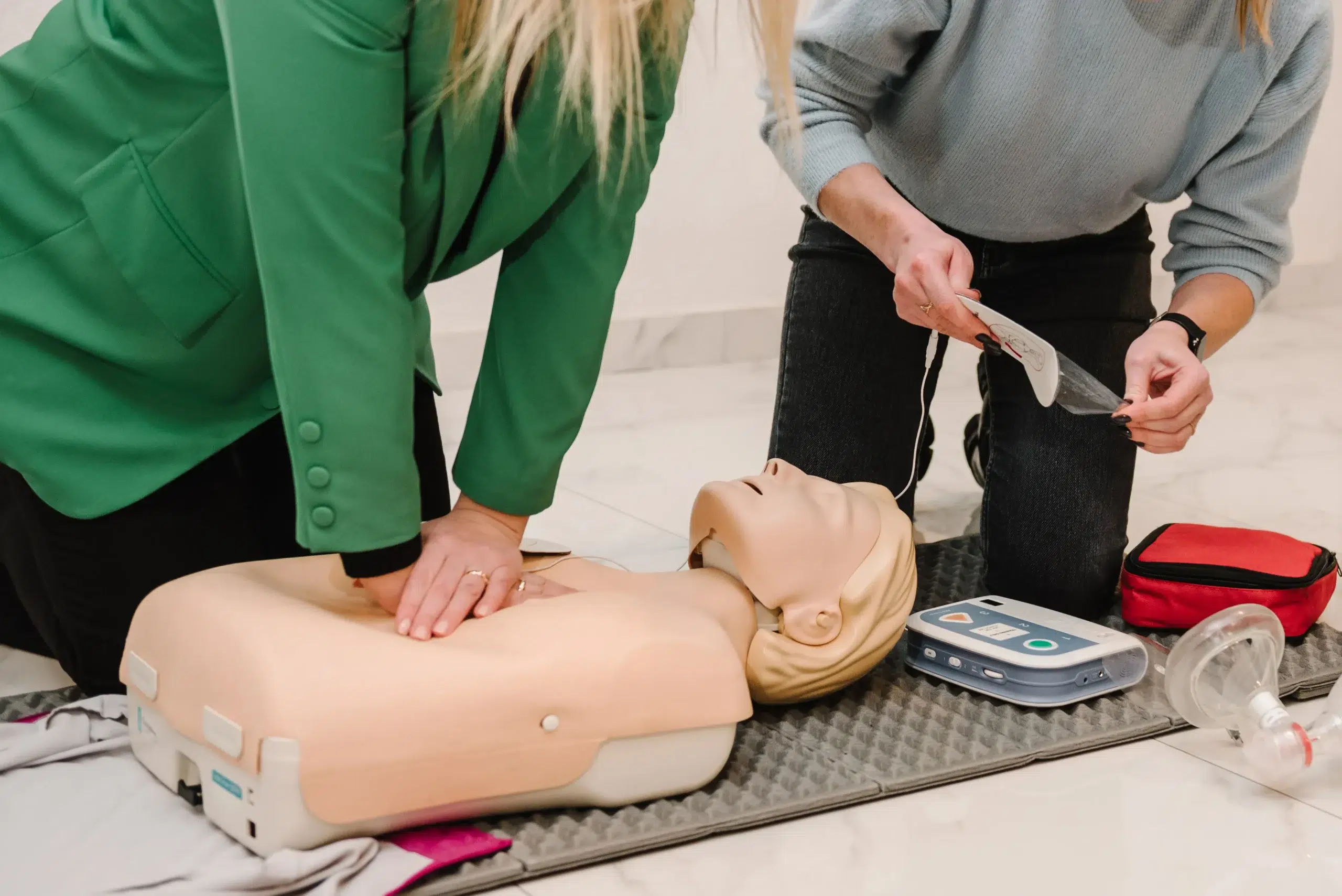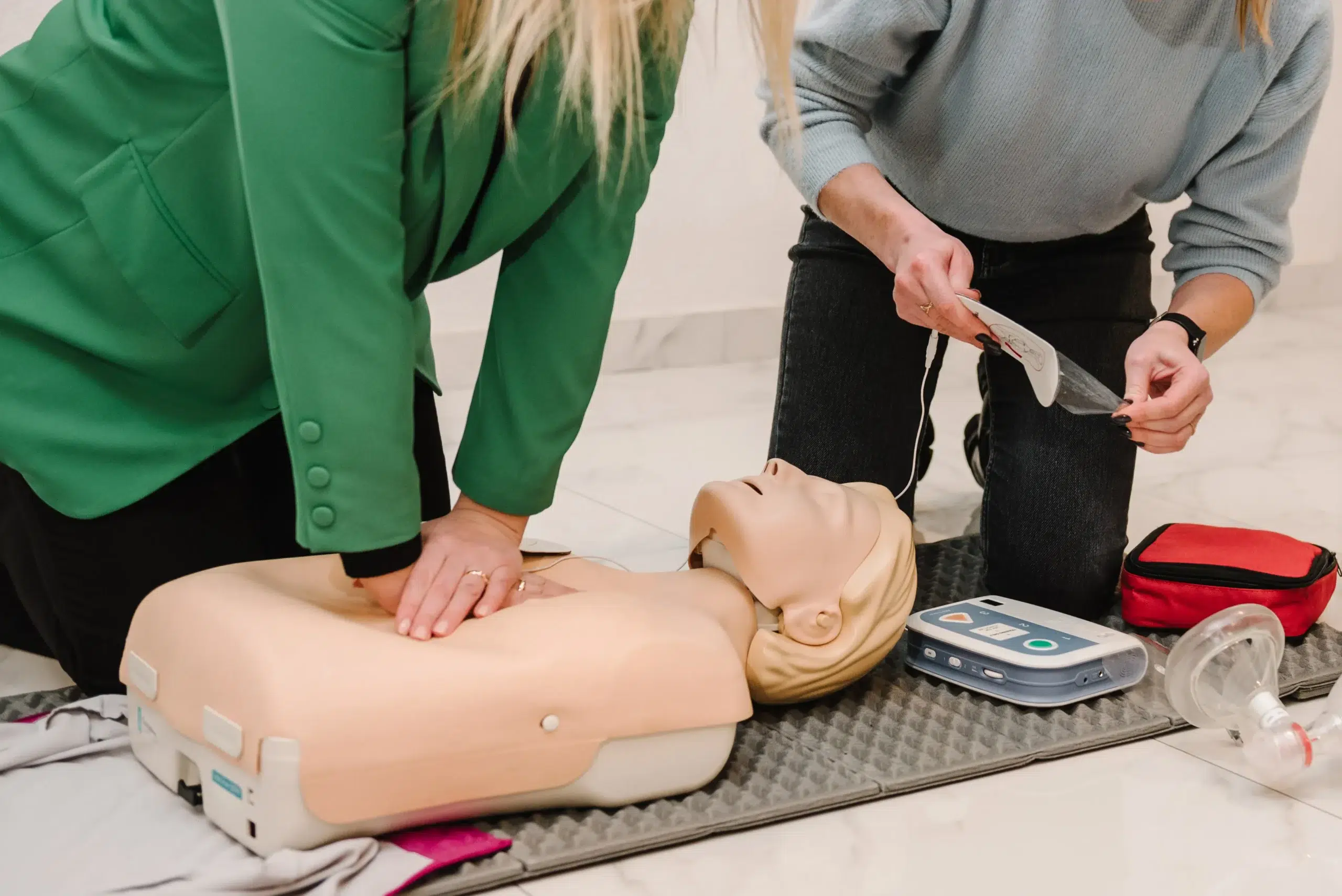Knowing CPR and first-aid can be the difference between life and death in an emergency. But where do you start if you’re looking for training in Orangevale? This guide simplifies the process, providing a clear overview of CPR and first-aid training options available in Orangevale. We’ll explore various course types, from basic CPR to advanced certifications like BLS and PALS, and discuss the importance of choosing a reputable training provider. Whether you’re a healthcare professional, a childcare provider, or simply someone who wants to be prepared for anything, this post will help you find the perfect CPR and first-aid training in Orangevale to suit your needs and schedule.
Key Takeaways
- Life-saving skills empower you: Learning CPR and First Aid, from the basics to advanced certifications, equips you to handle emergencies effectively. Find the right course type and format for your lifestyle, whether you’re a parent, teacher, or healthcare provider.
- Choose training that fits your goals: Consider course content, instructor qualifications (AHA certification and experience are key), and scheduling options when selecting a provider. Explore various options and compare what local providers offer to find the best fit.
- Certification provides valuable benefits: CPR and First Aid certifications boost your confidence, can open career opportunities, and most importantly, give you the potential to save lives. Maintain your certifications to ensure your skills remain sharp.
What is CPR and First Aid Training in Orangevale?
CPR (Cardiopulmonary Resuscitation) is a life-saving technique used when someone’s breathing or heartbeat has stopped. It involves chest compressions and rescue breaths to circulate oxygenated blood to the brain and other vital organs until professional medical help arrives. First Aid encompasses the initial assistance given to someone experiencing a sudden illness or injury. This can range from treating minor cuts and burns to managing more serious conditions like choking or a broken bone. Both are essential skills that empower you to respond effectively in emergencies.
Why Learn Life-Saving Skills?
Learning CPR and First Aid gives you the tools to make a real difference in critical situations. A solid CPR education program can undoubtedly save lives. You could be the first responder in a medical emergency at home, at work, or even out in the community. Knowing how to react quickly and confidently can significantly impact the outcome, potentially minimizing injuries and even saving lives. These skills not only benefit those around you but also instill a sense of personal confidence and preparedness.
Available Training Options
Fortunately, numerous courses are available in Orangevale and nearby cities like Citrus Heights and Sacramento. These courses cover everything from basic CPR and First Aid to more advanced certifications like BLS (Basic Life Support) and PALS (Pediatric Advanced Life Support). Citrus Heights CPR Classes offers a range of options, from basic CPR training to specialized certifications. You can find classes tailored to specific needs, whether you’re a healthcare professional requiring advanced training or a parent wanting to learn basic life support for infants and children. Some providers offer same-day certification cards, making it convenient to get certified quickly. For those seeking other options, Professional CPR also provides CPR, AED, and First Aid classes in Orangevale. With so many choices, finding the right training program to fit your schedule and learning style is easier than ever.
Find the Right CPR and First Aid Course
Knowing which CPR and first aid course best suits your needs can feel overwhelming with so many options. This section breaks down the different types of courses, various learning formats, and training providers in the Orangevale area so you can choose the best fit.
Course Types
Basic CPR Training
Basic CPR training teaches the essentials of CPR for adults, children, and infants. You’ll learn to recognize the signs of a cardiac arrest and how to perform chest compressions and rescue breaths. Many basic CPR courses also cover AED use and choking relief. This basic training is a great starting point for anyone wanting to develop these life-saving skills.
BLS (Basic Life Support)
BLS certification goes a step further than basic CPR training. It’s designed for healthcare providers and other professionals who need a more in-depth understanding of life support techniques. BLS covers everything from basic CPR and AED use to advanced airway management and team dynamics during a medical emergency.
ACLS (Advanced Cardiovascular Life Support)
ACLS courses are for healthcare professionals who manage cardiopulmonary arrest and other cardiovascular emergencies. This advanced training builds upon BLS skills and focuses on complex algorithms, pharmacology, and effective team communication in critical situations.
PALS (Pediatric Advanced Life Support)
PALS certification focuses on the specialized needs of infants and children facing respiratory or cardiac emergencies. Like ACLS, it’s designed for healthcare providers and involves advanced life support techniques tailored to pediatric patients.
First Aid Training
First aid training equips you with the skills to handle a wide range of medical situations, from minor cuts and burns to more serious injuries like fractures and allergic reactions. Learning first aid complements CPR training and provides a well-rounded skill set for responding to emergencies.
Course Length and Formats
CPR and first aid courses are designed to accommodate busy schedules. You can find options ranging from quick, focused classes to more comprehensive programs. Many providers offer weekday and weekend classes, as well as on-site training for groups. Blended learning formats, combining online instruction with in-person skills practice, are also increasingly popular. This flexible approach allows you to find a course that fits your availability and learning style.
Local Training Providers
Citrus Heights CPR Classes
Citrus Heights CPR Classes offers a comprehensive range of courses, from basic CPR and first aid to advanced certifications like BLS, ACLS, and PALS. They also provide specialized training programs, such as EMSA Child Care Health & Safety and RQI classes, and offer discounts for group classes. They even have a low price guarantee.
Professional CPR
Professional CPR provides CPR, first aid, and BLS classes to individuals and businesses in the Orangevale area.
OVparks
OVparks offers professional-level CPR/AED training.
Safety Training Seminars
Safety Training Seminars provides American Heart Association (AHA) certified CPR, BLS, ACLS, PALS, and first aid courses throughout Northern California. Contact us for more information.
Costs and Registration
Getting CPR and first aid certified is an investment in yourself and your community. Understanding the costs and registration process can help you plan for your training.
Course Pricing
CPR and first aid course pricing varies depending on the type of course and the training provider. Basic CPR classes typically start around $60, with more advanced courses like BLS certification costing a bit more. Citrus Heights CPR Classes offers package deals that combine CPR and first aid training for a discounted price. Check with your chosen provider for the most up-to-date pricing and be sure to ask about our low price guarantee.
Group and Corporate Discounts
If you need to train a group, like your workplace or a community organization, ask about group discounts. Many providers, including Citrus Heights CPR Classes, offer reduced rates for groups of five or more. This can be a cost-effective way to get everyone certified together. Some companies also offer flexible billing options for corporate training to simplify expense management.
Register for Classes
Registering for a CPR or first aid class is usually simple. Many providers offer online registration where you can choose a convenient date and time. Citrus Heights CPR Classes offers various schedules, including weekday and weekend classes, and even on-site training for larger groups. Some providers also offer blended learning, combining online coursework with in-person skills practice.
Enrollment Prerequisites
In most cases, there are no prerequisites for basic CPR or first aid classes. However, some advanced certifications, like BLS, ACLS, and PALS, might require proof of current healthcare provider status. Confirm any specific requirements with the training provider or certifying organization. If you’re renewing an existing certification, you’ll likely need a refresher course. Contact Citrus Heights CPR Classes to learn more about renewal requirements.
Instructor Qualifications and Standards
Knowing your instructor’s qualifications is just as important as the course content. It ensures you’re learning effective, up-to-date techniques from experienced professionals. Here’s what to look for in a CPR and first aid instructor:
American Heart Association Certification
A key indicator of quality instruction is American Heart Association (AHA) certification. The AHA sets rigorous standards for CPR and first aid training, and certification demonstrates that instructors have met these standards. This certification signifies that your instructor has completed a comprehensive training program and stays current with the latest research and techniques in resuscitation science. Citrus Heights CPR Classes offers AHA-certified courses, ensuring your training aligns with national guidelines.
EMS Experience
Real-world experience is invaluable in emergencies. Instructors with a background in Emergency Medical Services (EMS) bring practical knowledge and insights to the classroom. They can share firsthand accounts of various emergency scenarios, helping you understand how to apply your skills effectively under pressure. This practical experience bridges the gap between theory and real-world application, making your training more impactful.
Specialized Training and Continuing Education
Look for instructors with specialized training and a commitment to continuing education beyond core certifications. Fields like EMSA Child Care Health & Safety require specific expertise. Instructors should be well-versed in the latest protocols for these specialized areas. Ongoing professional development ensures instructors remain at the forefront of advancements in CPR and first aid, providing you with the most current and effective life-saving skills. Citrus Heights CPR Classes offers a variety of specialized courses, ensuring instructors are equipped to handle diverse emergency situations.
Benefits of CPR and First Aid Certification
Getting your CPR and First Aid certification offers several valuable benefits, both personal and professional. Knowing you can handle an emergency instills confidence and opens doors to new opportunities.
Build Confidence
Emergencies are stressful. Quality training programs, like those offered by Citrus Heights CPR Classes, equip you with the knowledge and skills to respond effectively under pressure. This translates to greater confidence in your ability to assist others when they need it most. You’ll be prepared to take action instead of feeling helpless.
Advance Your Career
CPR and First Aid certifications are valuable assets in many professions. For some, like healthcare providers, teachers, and childcare professionals, these certifications are often mandatory. Even if not required, having these credentials on your resume demonstrates your commitment to safety and can give you an edge. BLS certification, for example, can be a stepping stone to more advanced medical training. Check out our low price guarantee for affordable options.
Save Lives
The most significant benefit of CPR and First Aid certification is the potential to save a life. Knowing how to perform CPR and administer basic first aid can make a critical difference in the moments following an accident or medical emergency. Your skills can help bridge the gap until professional medical help arrives. For more information, contact us today.
Healthcare Career Advancement
For those already working in healthcare, maintaining up-to-date certifications is essential. RQI programs and other specialized training can enhance your skills and demonstrate your commitment to providing high-quality patient care. This can lead to career advancement and increased earning potential. Whether you’re a seasoned professional or just starting out, investing in your training is an investment in your future. Consider our discount group classes for cost-effective training.
Choose the Right CPR and First Aid Training
So, you’re ready to learn CPR and first aid? Awesome! Choosing the right training can feel a little overwhelming with all the options out there, but don’t worry—we’ll break it down. This section will help you find the perfect course for your needs.
Choosing a Provider
First things first: find a reputable training provider. Look for organizations like Citrus Heights CPR Classes that offer a variety of courses, from basic CPR and first aid to more specialized training like the EMSA Child Care Health & Safety program. A range of options ensures you can find the right fit, whether you’re a parent, a teacher, or a healthcare professional. It’s also smart to choose a provider with a proven track record, like Professional CPR, which has trained thousands of individuals and businesses in the Orangevale area. A solid reputation makes a difference.
Compare Local Options
Once you’ve got a few providers in mind, take some time to compare what they offer. Think about what’s important to you. Are you a healthcare provider looking for BLS recertification in Orangevale? Or are you learning these essential skills for the first time? Either way, there’s a course out there for you. Explore different CPR training providers and see what they offer. Look for flexible scheduling—weekday and weekend classes, on-site training, or even blended learning formats—to fit your busy lifestyle.
Maximize Your Training
Finally, think about how to get the most value for your money. Many training centers offer discounts, so keep an eye out for those. For example, some providers offer discounts if you book CPR and First Aid training together. If you’re training with a group, ask the provider about group discounts; this can be a great way to make training more affordable. A little research upfront can save you money and help you get the best possible training experience.
Related Articles
- Essential Workplace CPR and First-Aid Training Guide
- Your Guide to First Aid Training in Orangevale – Citrus Heights CPR Classes
- The Importance of CPR in Saving Lives
- Best CPR Training in Sacramento: Courses and Providers
- Why CPR Matters in Healthcare – CPR and First-Aid Training
Frequently Asked Questions
What’s the difference between CPR and First Aid? CPR focuses specifically on restoring breathing and circulation when someone’s heart has stopped. First Aid covers a broader range of immediate care for various injuries and illnesses, from minor cuts to more serious situations. Think of CPR as one specific technique within the larger umbrella of First Aid.
How do I choose the right CPR or First Aid class? Consider your specific needs and goals. Are you a healthcare professional, a parent, or someone simply wanting to be prepared for emergencies? Think about your schedule and preferred learning style. Some classes are short and focused, while others are more comprehensive. Look for a reputable provider like Citrus Heights CPR Classes or Professional CPR, offering various courses and flexible scheduling.
Why should I get certified? Certification demonstrates you’ve received standardized training and met specific requirements. It provides credibility and can be essential for certain jobs or volunteer opportunities. More importantly, it gives you the confidence to act quickly and effectively in an emergency.
How much do CPR and First Aid classes cost? Costs vary depending on the course type, provider, and any included certifications (like BLS or PALS). Basic CPR classes are generally more affordable than advanced certifications. Many providers offer discounts for groups or combined CPR/First Aid courses. Check with your chosen provider for specific pricing.
What if I need to renew my certification? Most certifications require renewal after a certain period, typically every two years. Renewal usually involves a shorter refresher course covering the latest guidelines and techniques. Contact your certifying organization or training provider for information on renewal requirements and available courses.


